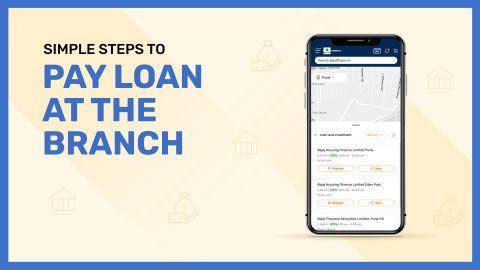In the world of healthcare, securing medical equipment can be a significant financial undertaking, especially for medical professionals and institutions. Sometimes, due to changes in business structure, equipment needs, or financial adjustments, the question arises: Can a medical equipment loan be transferred to another party? Whether you're looking to transfer the loan to a colleague, partner, or another institution, it’s crucial to understand the process, eligibility, documentation, and charges associated with such a transfer. A Medical Equipment Loan Transfer not only provides flexibility but can also alleviate financial pressure in times of business transition. However, it's essential to navigate the process correctly, ensuring that both parties are fully informed and compliant with all requirements. In this guide, we will explore everything you need to know about transferring a medical equipment loan, from the eligibility criteria to the specific steps involved, and the charges that may apply.
Understanding medical equipment loan transfer: Is it possible?
Transferring a medical equipment loan is generally possible but requires careful consideration. Medical equipment loans, like any other financial product, are bound by legal agreements and terms set by your lender. Typically, these loans are structured in such a way that they can be transferred with approval from the bank or lending institution. However, before proceeding with the transfer, both the original borrower and the new borrower need to meet certain criteria set by the lender. These criteria are in place to ensure that the transfer does not violate the terms of the original agreement. Factors like the loan’s outstanding balance, payment history, and the financial stability of the new borrower will be evaluated.
While transferring the loan can be beneficial, especially in situations where the borrower is no longer able to continue with the repayments, it’s important to understand the process thoroughly. The process can vary from one lender to another, and understanding the steps involved will make the transition smoother.
Transferring a medical equipment loan might come with additional fees and charges. Therefore, it’s essential to consult the lender and carefully review the agreement to avoid any surprises. The process can seem complex, but with the right approach and knowledge, you can ensure that your loan transfer is executed smoothly. In the following sections, we’ll discuss in detail the eligibility criteria, step-by-step process, required documents, associated charges, and benefits of transferring a medical equipment loan.
Eligibility criteria for transferring medical equipment loans
Outstanding loan balance
The loan should not have any overdue or pending payments.
The balance should be within the acceptable range for transfer approval by the lender.
Approval from lender
The lending institution must approve the transfer. Not all loans may be eligible for transfer.
The lender will evaluate the borrower’s financial history and the new borrower’s creditworthiness.
Creditworthiness of new borrower
The new borrower must have a good credit score and financial stability to ensure the repayment of the loan.
The lender may require financial documents to assess the new borrower’s ability to repay.
Legal compliance
Both parties must comply with legal and regulatory requirements regarding loan transfers.
The loan transfer should not violate any terms or conditions set forth in the original agreement.
Medical equipment ownership
The medical equipment must be under the original borrower’s name and eligible for transfer as per the loan agreement.
The transfer must align with the usage and ownership of the equipment.
No active defaults
The original borrower should not have any active defaults or legal issues associated with the loan.
The new borrower should not have a history of defaults.
How to transfer a medical equipment loan: Step-by-step guide
Consult your lender
Contact your bank or financial institution to inquire about the possibility of transferring the loan.
Understand their specific process and requirements for loan transfers.
Check loan agreement terms
Review the terms and conditions of your loan agreement.
Confirm whether the loan is transferable and under what conditions.
Obtain financial documents
Gather necessary documents from both the original and new borrower, such as financial statements, credit reports, and identity proofs.
The new borrower may also need to provide proof of employment or business stability.
Submit transfer application
Submit a formal request for loan transfer to the lender.
Ensure both borrowers sign the application and provide all required details.
Lender’s approval
The lender will review the request, the loan history, and the new borrower’s financial standing.
They will either approve or deny the loan transfer.
Sign a transfer agreement
Once approved, both parties must sign a formal loan transfer agreement outlining the terms and conditions.
This document legally transfers the loan liability to the new borrower.
Finalise the process
Upon completion, ensure that the new borrower receives the loan documentation, and any remaining payments are scheduled.
Update the medical equipment's ownership and insurance details, if applicable.
Documents required for medical equipment loan transfer
Identity proof
Aadhaar card, passport, voter ID, or other government-issued ID for both the original and new borrower.
Address proof
Recent utility bills, lease agreement, or bank statements to confirm the current address of both parties.
Loan account details
Loan account number, outstanding balance, payment history, and original loan agreement.
Financial documents
Income tax returns, bank statements, business financials, or pay slips to verify the new borrower’s financial stability.
Equipment ownership documents
Proof of ownership of the medical equipment under the original borrower’s name, including purchase invoices and registration.
No Objection Certificate (NOC)
A certificate from the lender allowing the transfer of the loan, confirming there are no pending dues or issues.
Insurance documents
If the equipment is insured, provide the insurance policy documents, with details of the new borrower’s coverage.
Charges for transferring medical equipment loan to another person
Loan transfer fees
Banks may charge a processing fee for the loan transfer, typically a percentage of the loan amount or a fixed fee.
Stamp duty
Stamp duty fees are applicable to the legal documents involved in the loan transfer process and vary by region.
RTO charges
If the equipment is registered with an RTO (such as medical vehicles), you may incur registration transfer charges.
Legal fees
Some banks may charge for legal services to draft the necessary documentation and contracts for the transfer.
Insurance premium
You may need to adjust the insurance policy to include the new borrower, which could involve additional premium payments.
Benefits of transferring a medical equipment loan to another person
Alleviates financial pressure
Transferring the loan can relieve the original borrower from financial obligations, especially in cases of business restructuring.
Continued use of equipment
The new borrower can continue to use the medical equipment without disruption, ensuring business operations aren’t impacted.
Improved loan management
The new borrower may have better financial stability or access to better terms, improving the overall loan management.
Avoids default
Transferring the loan to a more financially stable party can help avoid potential defaults or overdue payments.
For further assistance with how to clear loan fast, or managing a loan overdue, you can explore additional resources and tips.
Conclusion
In conclusion, transferring a medical equipment loan can be a viable solution for individuals or institutions looking to alleviate financial burdens or adjust business operations. While the process involves specific eligibility criteria, documentation, and charges, it provides flexibility and continuity. Understanding the steps involved, as well as the associated costs, is crucial to ensuring a smooth transition. By carefully reviewing your loan terms and consulting with your lender, you can make informed decisions that benefit both parties. Ultimately, a successful loan transfer can lead to better financial management and uninterrupted use of essential medical equipment.




